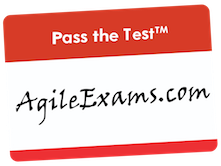Scrum is named after the scrum in rugby. It is a method of restarting the game after an unintentional breakdown. For our purposes, Scrum is a methodology related to the agile software development process. Historically, the Scrum method was commonly used in the management of product development projects. However it is now used in the management of software development projects as well.
In the 1990’s studies were conducted to improve the pace and flexibility of commercial product development through iterative means. According to records, this methodology was first applied by Easel Corporation in 1993. This was during the development of an Object oriented design and analysis tool. The methodology was applied as more of a framework rather than a full process.
In the Scrum approach, full user requirements descriptions or completely detailed activities to be completed in a project are not finalized at the beginning of the project. Instead the team receives prioritized activities that are revisited throughout the project. These activities are performed in phases called “sprintsâ€. The team members of Scrum can be divided into three roles. They are the Scrum master, the Product Owner and the Team. The Scrum Master is the one who maintains the processes like a project manager. This person is not the team leader, rather he or she acts like a buffer between the team and external interests. On the other hand the product owner is the one who represents the business and stake holders. He or she can be considered as the voice of the customer.  The real design, analysis, implementation and testing are done by the team consisting of about 7 members.
In this approach, the team produces a shippable product during each sprint (or phase). Each sprint will have durations of two to four weeks. Another two terms related to this approach is product backlog and sprint backlog. Product backlog is a set of features or works to be done and sprint backlog is the record of things the team decides to complete within the current sprint. There will be a sprint planning meeting to make decisions regarding the things to be completed in the next sprint. During the meeting the product owner informs the team members about the tasks in the product backlog. Team members can select their tasks and decide how much they can finish at the end of the sprint.
Sprints must end on the agreed upon time. The tasks which are not finished are added to the product backlog. After a sprint, the team should demonstrate the working and finished product. There are wide varieties of tools for this methodology. Common software such as Excel spreadsheets can be used to record and maintain backlogs.
The Scrum approach reveals that working for more hours does not necessarily deliver more output or value to the customer. This adaptive project management technique also gives emphasis to the fact that an engaged and involved team can handle complex tasks in an efficient and expeditious manner.
Sources:
http://en.wikipedia.org/wiki/Scrum_%28development%29
http://www.selectbs.com/process-maturity/what-is-scrum-development
